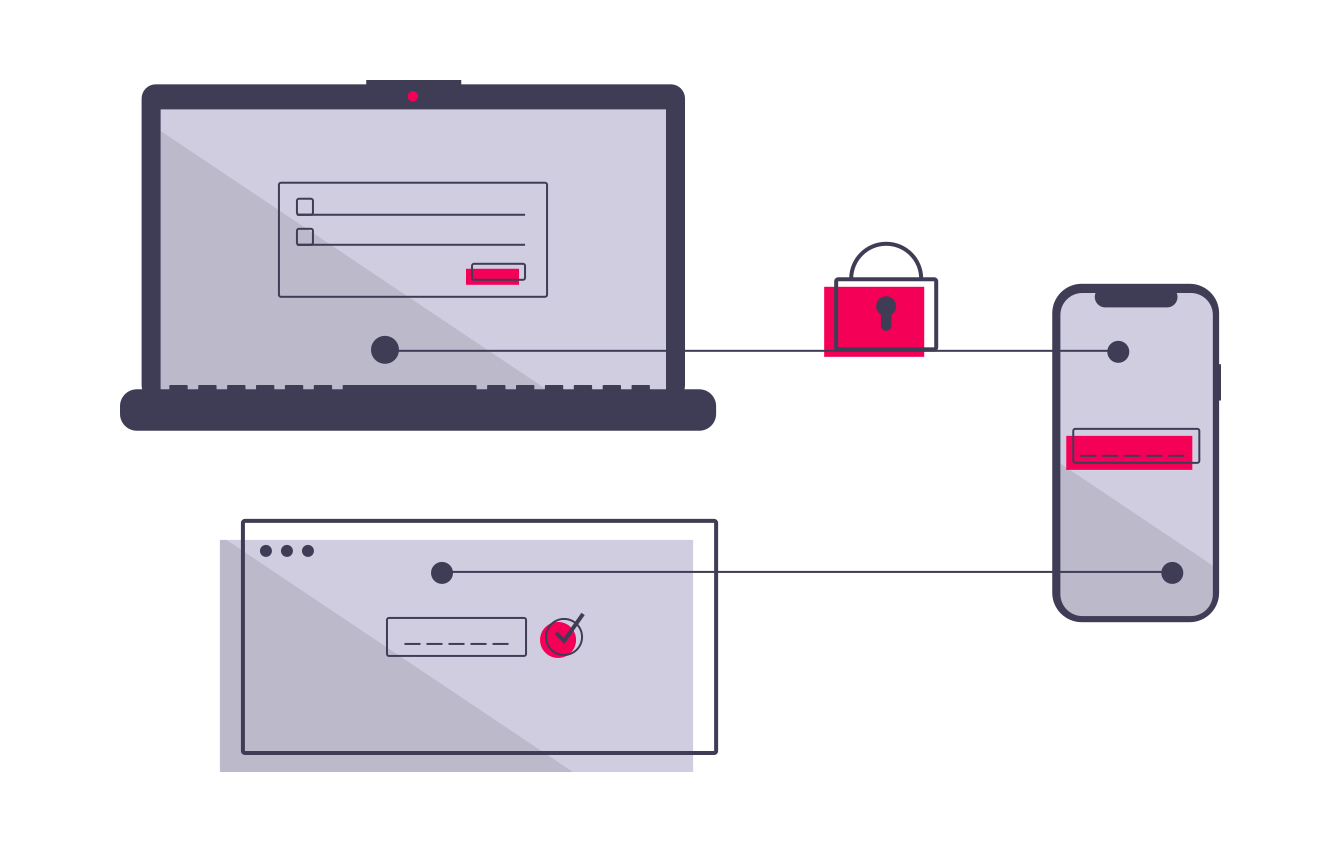This article is your guide to understanding bid requests. We’ll explore what they are, how they function in your operations, and the valuable insights they offer. Let’s delve into it!
Ever wondered how the whole bidding process kicks off? How do advertisers quickly spot new inventory? Or how do they figure out which ads to show? Well, it all starts with something called a bid request.
Not only do the bid requests help establish the connection between publishers and advertisers, but also enable relevant or contextual advertising.
Let’s explore how this behind-the-scenes player holds the key to these questions and more.
What is A Bid Request?
A bid request comprises certain lines of code containing the details required to sell inventory and display ads.
It’s a set of information sent by ad exchanges to the advertisers containing inventory details about the platform, number of impressions, and keys to user-data (IP, pixels, tags, cookies). Using this bid request, the advertisers place their bid for the inventory and then finally place their ad.
The process starts as soon as a visitor reaches on the website. A bid request is then generated informing about inventory available for impressions. As we know every user is unique and so does every bid request. Because bid request highly depends on the user’s demographics (geographic location, age, gender, visited websites, etc.).
Bid requests are used for real-time bidding, exchange bidding, and header bidding. To further understand bid request, you’d need to know about the bidding process first.
How Bid Request Works?
Before we get to bid request, it’s first essential to understand the role of real time bidding in the bid requests.
What is Real-Time Bidding?
As the name suggests, real-time bidding works in real-time. Likewise, inventories are sold in real-time and hence advertisements are displayed in real-time. Here’s the actual process:
It starts with a visitor launching a web page which is showing real-time ads. That’s when a bid request is created from where the supply side picks the bid request. A supply-side platform receives many bid requests every second and uses yield management platforms to manage them. These bid requests are coupled based on inventory type and environment.
How Does Bid Request work?
Now, the bid request is sent to advertisers based on the user’s demographics. For example, advertisers interested in showing their ads to a 20-30 aged female living in Portland who is also interested in physics will receive the bid request. This may sound very specific, but there are tons of advertisers who design their ad campaigns for such users to see their ads.
Once the bid request is received, the advertisers place their bids and send a bid response with their amount. The highest bidder gets to display the ad. And this entire process takes less than a second.
However, if the user refreshes the same webpage, a new bid request will be generated and the process will start all over again.
Why Should Publishers Care Bid Request Proces?
Because the bidding world is not protected against fraud, knowing the process and understanding how bids are created and responded can help publishers have an entire view of the process.
A report by AdExchanger stated, that there have been numerous frauds where users’ personal information is sold to an organization without the users’ consent and publishers’ knowledge.
But how do they get a hold of user data in the first place? The Answer is bid request. A bid request contains information related to inventory as well as the users’ demographics. Using this, anyone involved in the bidding chain can get access to details such as IP address, age, gender, and even browsing history.
Many debates are conducted discussing whether using visitors’ demographics to show them personalized ads is a good practice or not. Yes, it indeed helps with better revenue generation for publishers. At the cost of security doesn’t sound really good, though.
What Kind of Information Does A Bid Request Have?
A bid request contains inventory details and user information in the form of codes. But nothing is encrypted. Here’s some basic info a bid request contains:
- Bid ID:
A unique ID is given to each request to identify a particular bid request.
- Impression:
Minimum number of impressions offered by available inventory for banner or video.
- Device:
All the information related to a device such as ISP (Internet Service Provider), type (PC, Mac, tablet, or smartphone), model, OS, and more.
- Website:
Whether the available inventory is for a webpage. If yes, then website ID, content type, domain name, and publisher’s ID of the site are added.
- Application:
Whether the available inventory is for an application. If yes, then application ID, content type, domain name, and publisher’s ID of the application are added.
- User:
Demographics of users such as age, gender, likings, and website history to personalize the ads.
- Extension:
Any additional information related to inventory that can be important for a DSP or an advertiser.
Note: The above-listed information may vary. Sometimes users install software to block sharing of personal information; restricting advertisers from displaying personalized ads.
Will Bid Requests Interfere With User’s Privacy?
As mentioned earlier, bid requests contain relevant information for publishers to set a target audience. However, some web browsers and applications have a built-in feature to make this information inaccessible.
Since user information might be limited in some bid requests, publishers may need to work with a wider range of data points. This can make it more challenging to ensure each ad perfectly matches a user’s profile.
Without receiving the user’s information, bid requests would have no use. Nevertheless, there’s a fine line established when curating the information so that both parties can get the benefit in a fair and streamlined manner.
Being a publisher, your part of the responsibility would be to make sure that the data included in bid requests is not shared with any unidentified vendors to avoid ad fraud.
Pros and Cons of Bid Requests for Ad Placement
Learning a bit about the pros and cons of bid requests helps you withstand the ever-evolving landscape of ad publishing. That said, let’s begin with a few pros.
Pros
The pros of bid requests are:
1. Revenue Boost
With bid requests, publishers allow advertisers to bid on their ad inventory, ensuring competitive pricing. It eventually boosts the revenue.
2. Targeted Advertisements
Bid requests work as a helping hand to publishers when they need to provide relevant and engaging ads to their audience. Whether it’s about the precise information on the ad or the demographics of the audience, bid requests have it all.
3. Performance Insights
For a publisher, curating valuable data on ad performance is essential to optimize ad placements well. Bid requests not only provide all the required data but also allow them to analyze metrics such as click-through rates.
Cons
There are a few cons as well; let’s take a look.
1. Ad Fraud Risks
Publishers always have to deal with ad fraud through bid requests. Most advertisers use not-so-legit strategies like click fraud or impression fraud to exploit the ad industry.
2. Complexity of the Process
All publishers are not that tech-savvy and may face a few technical issues when working with bid requests. In such cases, additional resources and gaining expertise can help.
Conclusion
The bid request is an essential part of the advertisement environment. The exchange of information between publisher and advertiser is possible because of bid requests. The programmatic dealing has many moving parts and bid requests keep this process moving.
Also, technology can’t be perfect, so neither can bid requests. It has some flaws leading to some major ad frauds. However, efforts like ads.txt and ads.cert by IAB can help in reducing some of the frauds.
It’ll take some time for ad industry to make the dealing completely secure. Until then, let’s focus on the good things and try to apply best practices in our system.
How to Deal With Common Challenges in Mastering Bid Requests?
Mastering bid requests is not a cakewalk for sure, it has some pitfalls that a publisher must take care of. So, some of the common challenges you may face when becoming proficient in bid requests.
Bid Request Rejection
One of the most common challenges to overcome is avoiding bid request rejection. Most of the time, bid requests are rejected due to incomplete or wrong information, disapproval of the user, and failure to adhere to industry standards.
So, to avoid rejection, ensure that the issues as mentioned above are resolved first.
Low-Quality Bid Requests
Some bid requests lack the quality required for ad optimization; hence, it results in poor experience for users and lower bid rates for publishers. So, to ensure you’re sending better-quality bid requests, confirm that the data is accurate, latest, and adheres to the industry guidelines.
This will also help in increasing ad revenue through user experience optimization.
Ever Evolving Industry
To draft the perfect bid request strategy that provides as-expected results, you must keep an eye on the latest industry updates. If you’re familiar with the history of online advertising, there’s no denying that it is ever-evolving. So, staying updated with the latest trends and newly introduced technologies will make your bid request strategy better.
Moreover, staying updated will also prevent ad fraud and unauthorized sales.
Frequently Asked Questions
A bid request contains the details required to sell inventory and display ads. This information contains inventory details, impressions, and keys to user data (IP, pixels, tags, cookies) sent by ad exchanges to advertisers.
To write a bid proposal:-
I. Understand the project in depth.
II. Conduct a client research.
III. Competitor evaluation.
IV. Offer an additional service or good.
V. Provide relevant information.
VI. Proposal proofreading
Bidding allows individuals to purchase goods and services through auctions. The process involves two or more entities competing for an asset by increasing their bids.

Reviewed by Deepak Sharma, Content Editor at Adpushup As part of AdPushup’s content team. Deepak Sharma handles editorial review and content optimization for adtech articles. He focuses on clarity and accuracy to help readers understand advertising technology topics.






1 Comment
So much informative about bidding. As a publishers, It’s very helpful to me. Hope you will write further and in detail in future. Thank you.